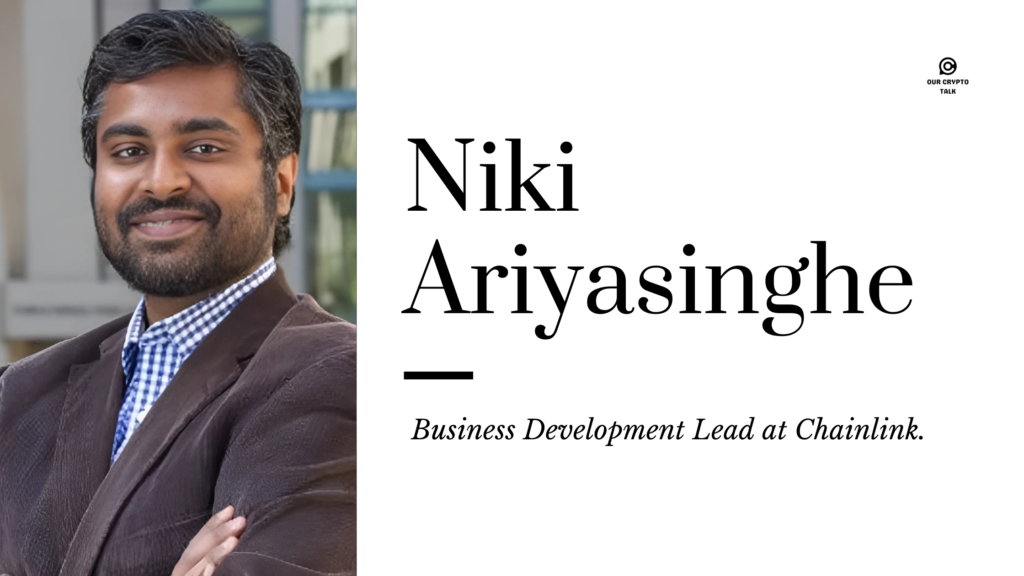At Sibos 2024, Niki Ariyasinghe, the Business Development Head for APAC and Middle East at Chainlink Labs, took to the stage to discuss a pressing issue in the blockchain and financial services space: privacy. As blockchain technology continues its journey into the mainstream, especially in sectors like banking and capital markets, privacy, interoperability, and compliance are key challenges that need to be addressed.
During the interview with Liz Lumley, Ariyasinghe dove deep into these issues and shared insights on how Chainlink is enabling secure and private onchain transactions for regulated financial institutions.
Convergence of Payment Networks
One of the key trends discussed by Ariyasinghe was the convergence of traditional banking payment networks with blockchain and digital assets.
This convergence is not just theoretical anymore; it’s becoming a reality as financial institutions increasingly turn to blockchain to streamline and enhance payment processes.
- Bank-Originated Payment Networks: Ariyasinghe highlighted how financial institutions are already collaborating, with some forming networks that include up to 15 institutions. These networks are working on creating more efficient, cost-effective, and seamless payment systems for customers.
- Interoperability Challenges: As we move into 2025, a significant challenge that arises is the need for interoperability between these bank-originated networks and Central Bank Digital Currency (CBDC) networks. In certain parts of the world, CBDCs are no longer in the pilot stage but are being deployed in live production environments.
The Need for Interoperability
Ariyasinghe stressed the importance of interoperability between various payment networks, including bank-originated ones and CBDCs, as institutions prepare for the future of payments.
- Connectivity Across Networks: One of the key demands from institutional customers is the ability to connect and interact seamlessly across different types of payment networks. This need goes beyond just efficiency—it’s a necessity for competitiveness in the financial world.
- A Shift from Concept to Reality: What once was a conceptual idea has now turned into a tangible challenge for financial institutions. This shift marks an important step in the evolution of blockchain technology, moving from theoretical pilot projects to real-world, scalable implementations.
Privacy Concerns in Onchain Finance
While the convergence of networks and the rise of interoperability is promising, privacy remains a critical issue in the financial sector. Ariyasinghe highlighted how Chainlink Labs is working to solve these privacy concerns, particularly for regulated financial institutions.
- Three Pillars for Financial Institutions:
- Security
- Compliance
- Privacy
Ariyasinghe explained that Chainlink has been working closely with over 100 financial institutions over the past 18 months to ensure that its solutions meet these essential pillars.
- Privacy-Enabled Transactions: One of the exciting announcements from Chainlink at Sibos 2024 was the launch of support for privacy-enabled transactions. This technology ensures that any information exchanged between blockchains is visible only to the relevant parties.
- Compliance with Regulatory Mandates: Financial institutions are not only demanding this privacy but are mandated by regulators to ensure the highest levels of confidentiality.
- Customizable Privacy Settings: Chainlink’s solution offers a customizable privacy layer, enabling institutions to determine who sees specific pieces of information. For example, a financial institution might want to share details with one counterparty but not with others. Chainlink’s privacy framework makes this possible.
From Proof of Concept to Real Solutions
In the blockchain world, the adoption of technology has often been described as slow and experimental, especially within traditional financial institutions. However, Ariyasinghe painted a picture of a rapidly changing landscape, where blockchain is moving from experimental phases to real-world use cases.
- Past to Present: Reflecting on the previous year, Ariyasinghe noted how, in 2023, blockchain adoption by banks was already palpable, with many institutions exploring how to implement the technology. Fast forward to 2024, and blockchain has moved beyond proof-of-concept projects and pilots to full production deployments.
- Production-Grade Solutions: Chainlink’s partnerships and solutions have helped push blockchain into the mainstream, providing banks with the necessary tools to scale their operations. Live transactions are already being executed within regulated financial environments, signifying a major leap forward.
- Privacy and Blockchain Use Cases: Chainlink’s new privacy framework opens up a whole range of use cases for regulated financial institutions. With assurances of data confidentiality, banks can now confidently execute blockchain transactions while meeting the stringent privacy and security demands of the industry.
The Evolution of Blockchain Adoption
Ariyasinghe also touched on how the financial industry has evolved in its adoption of blockchain. Over the past year, banks have shifted from cautiously exploring blockchain to actively implementing it across various sectors.
- The Adoption Curve: Ariyasinghe explained how blockchain adoption within the banking sector follows a similar pattern to other technological innovations. There are early adopters, fast followers, and laggards. In 2023, many institutions were still in the exploratory phase, but 2024 has marked a turning point.
- Increased Competition: Even the so-called “laggards” are now realizing that they cannot afford to be left behind. With competitors already deploying blockchain solutions, banks are feeling the pressure to provide similar services to their customers, especially institutional clients who are asking about their blockchain strategy.
- From Palpable to Tangible: Ariyasinghe used an interesting analogy to describe blockchain’s progress in the financial world, noting that in 2023, the adoption was palpable, but now it has become tangible. Institutions are no longer just talking about blockchain—they’re using it in live production environments, solving real-world problems.
Conclusion
Ariyasinghe’s insights at Sibos 2024 showcased the evolution of blockchain technology in the financial services sector. As banks move from the exploratory phase into full-scale deployment, the focus is now on solving critical issues like privacy, security, and compliance. Chainlink’s privacy-enabled solutions are a key part of this puzzle, offering financial institutions the tools they need to confidently integrate blockchain into their operations.



